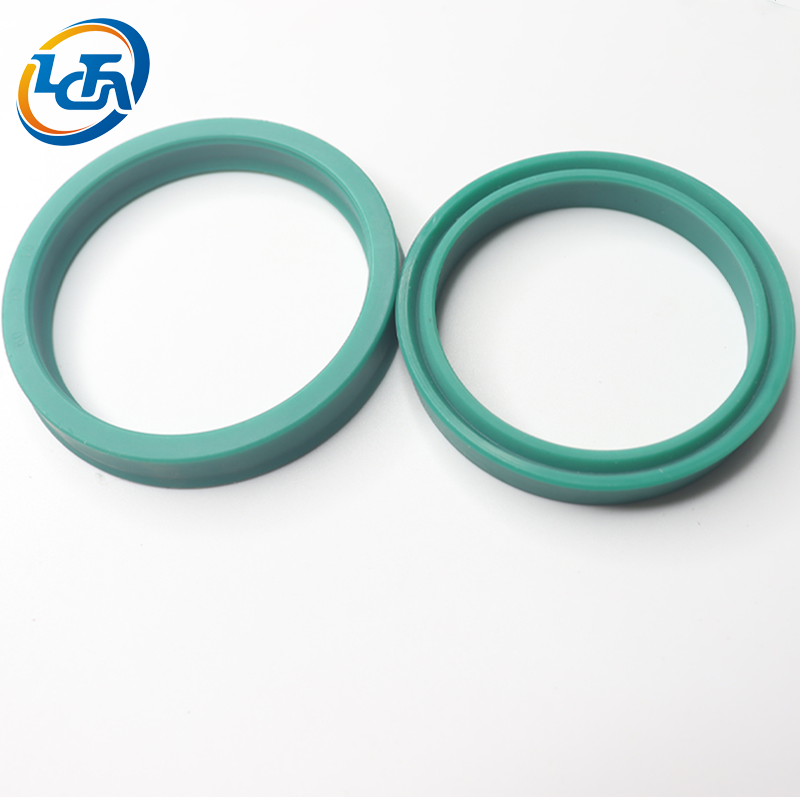Essential Maintenance Practices for Industrial Seals
Visual Inspection Protocols for Early Leak Detection
Having a good plan for regular visual checks makes all the difference when trying to catch leaks before they become serious problems in industrial seals. Most facilities find that sticking to set inspection times helps spot early warning signs like strange color changes or odd shapes in the materials that might point to coming failures. The best practice includes going through every important part of the system - looking closely at connection points, rubber gaskets, and where the seals actually sit against surfaces. Some companies have started using better equipment for these checks too. Borescopes let technicians see inside hard to reach spots while thermal imaging can pick up temperature differences that hint at hidden leaks we just can't see with our eyes alone. Getting ahead of these small issues means fewer unexpected breakdowns down the road and saves money in the long run since fixing things early avoids bigger repair costs later.
Fluid Analysis and Replacement Strategies
Fluid analysis plays a key role in keeping seals performing well over time. When we regularly check samples, we spot contaminants before they start wearing down seals, giving us important information about what's actually in our working fluids. Setting up replacement schedules makes sense too. Factors like operating temperatures and how fluids perform under stress should guide when we swap them out. Some facilities find it helpful to install good filtration systems alongside their regular checks. These filters extend fluid life significantly while helping maintain seal integrity, which means less downtime for repairs and fewer seal changes overall. The result? Systems run smoother for longer periods without unexpected failures disrupting operations.
Controlling Temperature Fluctuations in Hydraulic Systems
Keeping temperature under control matters a lot for how well hydraulic seals perform. Regular checks on temperature stop things from breaking down due to heat, and putting in cooling systems when needed keeps temps from going past what the seals can handle. Sticking to the temp ranges specified by manufacturers helps keep those seals working at their best. Insulation materials and heat exchangers are common fixes that actually work pretty well for stabilizing temps around the system. This kind of attention to temperature details makes all the difference in keeping hydraulic systems running smoothly without unexpected breakdowns or premature wear on components.
Critical Factors Affecting Seal Reliability
Material Compatibility with Process Fluids
Material compatibility matters a lot when it comes to keeping seals working properly in industrial environments. First things first, pick seal materials that actually work well with whatever fluids they'll be exposed to during operation. Getting this wrong leads to all sorts of headaches down the line including swelling, corrosion issues, or even brittle failures from chemicals reacting badly. Most plants follow standard testing protocols to check compatibility before installation, which saves money on replacements later on. And don't forget to keep an eye on how fluid compositions might change over time either. Even small shifts in what's flowing through the system can gradually break down seal integrity. Taking this kind of watchful approach pays off big time by avoiding unexpected breakdowns and keeping production running smoothly without constant interruptions.
Proper Installation Techniques to Prevent Misalignment
Getting installation right from the start makes all the difference in preventing seal misalignment problems that lead to breakdowns down the road. When workers know how to properly align seals during installation, they significantly cut down on issues caused by uneven wear patterns and annoying vibrations throughout the system. Specialized equipment such as laser alignment tools really helps technicians get those critical contact points just right between mating surfaces. Before actually starting any sealing work, it's smart to check alignment against established standards first. This simple step saves money and headaches later on. The whole process requires both careful attention to detail and experience working with different types of seals across various applications. Proper technique not only keeps seals functioning correctly but also extends their useful lifespan considerably.
Lubrication Requirements for Long-Term Performance
Getting the right amount of lubricant applied to seals makes all the difference when it comes to how long they last. The type of seal and what kind of environment it works in determines which lubrication method works best. For instance, some industrial seals need special greases while others work fine with standard oils. Checking lubrication levels on a regular basis keeps those seals running smoothly without wearing out too fast. Maintenance crews should know what happens when there's either too much or too little lubricant because both situations can damage equipment. Setting up clear guidelines for lubrication tasks helps everyone stay on the same page. When done properly, these basic maintenance steps keep seals performing at their peak, cut down on breakdowns, and ultimately save money on replacement costs over time.
Common Causes of Seal Failures in Heavy Machinery
Dry Running and Thermal Shock Effects
When seals run dry or experience thermal shock, they tend to fail much sooner than expected in industrial equipment. Dry running happens when there's not enough lubricant between moving parts, causing them to overheat and wear down rapidly. This kind of damage builds up until the seal simply gives out. Thermal shock works differently but just as destructively. Sudden temperature changes, like those seen during startup or shutdown cycles, can actually bend metal surfaces or break down rubber compounds in seals, leading to leaks. Installing proper temperature sensors throughout the system helps catch these dangerous spikes before real damage occurs. Most facilities find that combining regular visual checks with scheduled maintenance every few months keeps seal problems at bay. Taking this approach not only saves money on emergency repairs but also means machines last longer overall without unexpected breakdowns.
Vibration-Induced Seal Face Separation
Too much vibration in big industrial machines often causes seal faces to separate from each other, which is one of the main reasons why seals fail. Checking equipment regularly for these vibrations lets technicians spot problems like misalignment or imbalance before they become serious issues. Most shops now use specialized vibration analysis tools to track down these alignment problems quickly so fixes can happen before breakdowns occur. When maintenance crews understand how important it is to keep vibration under control, seals tend to last longer because there's less wear happening over time. The whole system becomes more reliable as well. Companies that implement strict vibration monitoring programs generally see fewer incidents where seal faces come apart due to excessive shaking, and their overall machine performance stays better maintained across operations.
Chemical Degradation of Sealing Components
Sealing components face serious problems from chemical breakdowns when exposed to aggressive substances in their operating environment. To stop this damage, it makes sense to evaluate how different chemicals affect sealing materials depending on where they're used. Many plants install monitoring equipment that checks the chemical makeup of process fluids, which catches dangerous reactions before they destroy seals. For facilities dealing with really tough conditions, switching to seals made from materials that resist chemical attack becomes necessary. Regular testing for chemical compatibility combined with smart material choices lets manufacturers fight off degradation issues. This approach keeps seals working properly longer while reducing costly replacements across various industrial settings.
Advanced Techniques for Seal Condition Monitoring
Thermal Imaging for Hotspot Detection
Putting thermal imaging cameras into regular use helps spot those hot spots that might mean trouble for seals down the road. The cameras let maintenance crews see temperature differences across equipment surfaces, giving them early warning signs before seals start wearing out or failing completely. When workers get proper training on reading these thermal images, they can find issues much faster and take corrective measures right away instead of waiting for bigger problems. Many facilities combine thermal checks with vibration analysis too, creating a more complete picture of how seals are holding up over time. This multi-angle approach just makes sense for keeping everything running smoothly while catching potential failures before they cause real damage.
Vibration Analysis to Identify Imbalance Issues
When companies incorporate vibration analysis into their predictive maintenance plans, they get valuable information about how seals are holding up. Modern vibration monitoring tools help spot problems before they become serious issues that could damage seals eventually. Looking at these readings allows technicians to tweak machine settings or schedules so small problems don't turn into complete seal failures down the road. The real advantage comes from actually using the data gathered rather than just collecting it. Seals last longer when maintained properly based on actual measurements instead of guesswork. Plus, this approach creates better habits around regular checkups and preventive care throughout the facility, something most maintenance manuals would recommend anyway for keeping machinery running smoothly without unexpected breakdowns.
Leak Rate Measurement for Predictive Maintenance
Leak rate measurement systems are really important for catching seal problems before they actually happen. When we set up normal leak rate benchmarks first, any unusual changes pointing to worn seals show up much sooner. This gives technicians time to fix things before major issues develop. All the information gathered helps plan when maintenance should happen and where to send resources, so repairs get done right the first time without wasting effort on unnecessary work. Looking ahead, this kind of predictive maintenance cuts down on unexpected shutdowns and makes the whole maintenance process work better. Operations stay running smoothly while companies save money by using their resources more wisely instead of reacting to crises as they come up.
Best Practices for Dry Gas Seal Maintenance
Gas Supply Purity and Filtration Standards
Keeping the gas supply clean matters a lot if we want to avoid those annoying seal failures caused by contamination. Good filtration systems need to be in place so the gas stays free from impurities and meets all those purity requirements everyone keeps talking about. We also need to test the gas regularly just to make sure it's still within acceptable limits. This helps catch any problems early before they become big headaches down the line. And don't forget about training the people working on site too. They need to know what to look for when something starts going wrong with the gas quality. Quick action from trained personnel can save a lot of money and downtime in the long run while keeping those seals intact and the whole system running smoothly.
Scheduled Replacement of Secondary Seals
A good plan for replacing those secondary seals needs to be put in place if we want our dry gas seals to keep performing well. The timing should come from what the manufacturers say plus actual data from how things are running day to day. Nobody wants to wait until something breaks down because worn out seals cause all sorts of problems. Keeping track of when each seal gets replaced helps everyone stay responsible and gives us clues about when the next round of maintenance will probably be needed. Getting staff trained on why these secondary seals matter so much makes a real difference in keeping systems reliable and avoiding unexpected shutdowns that cost time and money.
Alignment Verification for Rotating Components
Regular checks on how machine parts line up when they rotate can really cut down on seal wear and problems over time. When technicians use good quality tools and methods like laser alignment systems, they get better rotational accuracy which means less stress on those seals, so they tend to last longer in practice. Maintenance teams should make sure to look at their alignment procedures every now and then too, especially when there are changes in how equipment operates or new tech comes along. Keeping alignment processes current does more than just protect seals though. Machines run smoother and stay functional much longer when everything lines up properly, something most plant managers know from bitter experience after dealing with breakdowns caused by poor maintenance practices.







